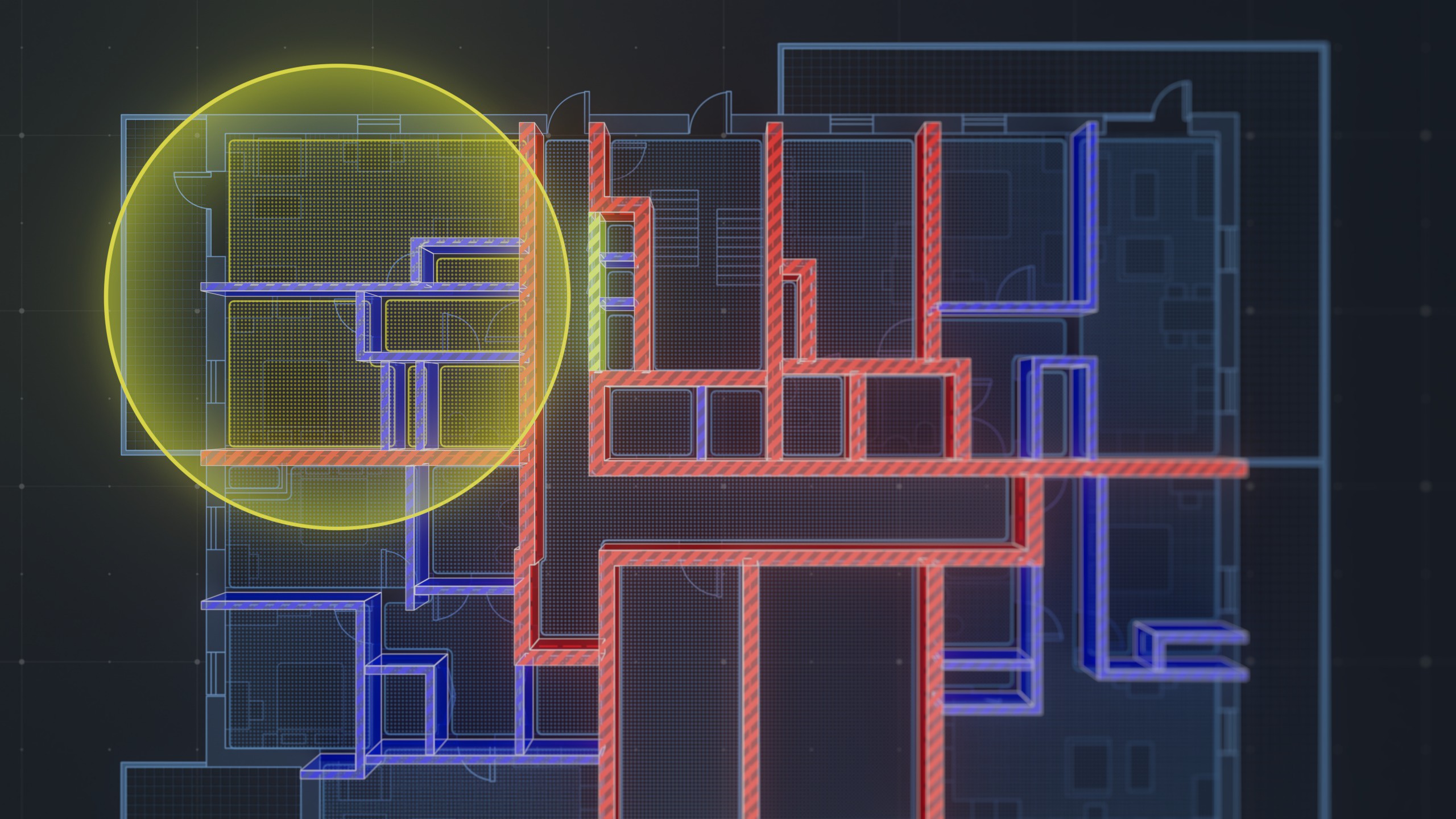A plot plan is a detailed, scaled drawing that illustrates the layout of a piece of land. It provides a comprehensive view of the property, indicating the location of structures, landscaping elements, access points, property boundaries, and utility lines. Essentially, it is a graphical representation of how a piece of land is used and developed.
Plot plans are crucial in various fields, including real estate, construction, urban planning, and landscaping, for several reasons:
- Legal Compliance: Plot plans ensure that construction and development activities adhere to local zoning laws and regulations. They help property owners and developers understand the permissible uses of land, setbacks, and other legal requirements.
- Accurate Construction: For builders and contractors, plot plans act as a blueprint for construction. They provide precise information about the placement of buildings, driveways, and other structures, ensuring that construction aligns with the intended design.
- Property Assessment: Assessors and appraisers use plot plans to evaluate the value of a property accurately. A clear depiction of the land's features aids in determining its worth based on location, accessibility, and potential for development.
- Infrastructure Planning: Municipalities and utility companies utilize plot plans to plan and install essential infrastructure, such as water and sewer lines, gas lines, and electrical connections. This planning ensures efficient delivery of services to homes and businesses.
- Environmental Considerations: Plot plans are valuable in environmental assessments. They help experts identify ecologically sensitive areas, plan for green spaces, and ensure that landscaping does not harm the natural environment.
- Resolving Disputes: In case of property disputes, having an accurate plot plan can be instrumental. It serves as a visual reference that helps resolve boundary disputes and disagreements related to land usage.
- Future Development: Plot plans assist in long-term planning. They can be used to visualize and strategize future developments, expansions, or renovations on the property, allowing for sustainable growth.
In summary, plot plans are indispensable tools that facilitate legal compliance, accurate construction, property assessment, infrastructure planning, environmental considerations, dispute resolution, and future development. Their importance lies in their ability to provide a clear and comprehensive understanding of a piece of land, benefiting property owners, developers, and communities alike.
Components of a Plot Plan
Site Boundaries and Property Lines
Site boundaries and property lines are fundamental elements of a plot plan. They define the legal limits of a property and are essential for understanding the land's extent. Accurate representation of these boundaries ensures that all constructions and developments occur within the permissible area and comply with local regulations.
Buildings and Structures
Buildings and structures are depicted on a plot plan to scale. This includes houses, commercial buildings, sheds, garages, fences, and any other permanent structures. The placement, dimensions, and distances from property lines are specified, providing a clear understanding of the property's built environment.
Access Points and Driveways
Access points, such as gates, pathways, and driveways, are illustrated on the plot plan. They indicate how people and vehicles enter and exit the property. Proper planning of access points is crucial for traffic flow, safety, and compliance with local traffic regulations.
Landscaping Elements
Landscaping elements, such as gardens, trees, shrubs, and other green spaces, are included in the plot plan. Their placement and layout are designed to enhance the property's aesthetics, provide privacy, and contribute to the overall environmental balance. Landscaping details help in visualizing the property's outdoor space.
Utility Lines and Infrastructure
Utility lines and infrastructure components are a vital part of a plot plan. This includes underground or overhead lines for electricity, gas, water, and sewerage. Additionally, infrastructure like stormwater drains, wells, septic tanks, and irrigation systems are depicted. Understanding the location of these utilities is essential for construction planning, avoiding conflicts, and ensuring safety.
Each of these components is crucial for creating a comprehensive and informative plot plan. Together, they provide a detailed overview of the property, aiding in various aspects such as construction, landscaping, and infrastructure development.
Types of Plot Plans
Residential Plot Plans
Residential plot plans are specifically designed for individual homes, apartments, or housing complexes. These plans focus on detailing the layout of houses, garages, driveways, gardens, and other residential amenities. They often include information about setbacks, allowing homeowners to understand the permissible limits for building structures and landscaping within their property boundaries.
Commercial Plot Plans
Commercial plot plans are created for businesses and commercial properties. These plans outline the layout of commercial buildings, parking lots, loading docks, access points, and landscaping features. They are essential for businesses to plan their space effectively, ensuring optimal utilization for shops, offices, warehouses, and other commercial purposes. Additionally, commercial plot plans may include zoning information and compliance details necessary for permits and approvals.
Agricultural Plot Plans
Agricultural plot plans are specific to farms, ranches, and agricultural land. These plans provide detailed information about crop fields, irrigation systems, barns, silos, animal pens, and other farm-related structures. Agricultural plot plans are crucial for farmers and agricultural experts to plan crop rotation, irrigation, and animal husbandry practices efficiently. They may also include information about soil types, drainage, and environmental considerations.
Industrial Plot Plans
Industrial plot plans are designed for manufacturing facilities, factories, and industrial complexes. These plans focus on the layout of production areas, machinery placement, storage facilities, loading docks, utility connections, and safety features. Industrial plot plans are essential for optimizing workflow, ensuring safety regulations compliance, and planning for future expansions or modifications within the industrial setting. They play a vital role in efficient production processes and facility management.
Each type of plot plan serves a specific purpose, tailored to the needs of different property types and land uses. Whether for residential, commercial, agricultural, or industrial purposes, these plans provide essential details for construction, development, and effective land management.
Creating a Plot Plan
Hiring a Professional Surveyor or Designer
Hiring a professional surveyor or designer is a recommended approach for creating accurate and reliable plot plans, especially for complex or large-scale properties. These experts have the knowledge and expertise to conduct precise land surveys, ensuring that property boundaries, topography, and other essential features are accurately represented. They also understand local regulations and zoning laws, ensuring that the plot plan complies with legal requirements. Professionals can incorporate detailed measurements and provide stamped, official documents that are often necessary for permits and legal purposes.
Using Software and Online Tools
Advances in technology have made it possible for individuals and smaller-scale projects to create plot plans using various software and online tools. There are numerous user-friendly applications available that allow users to input property dimensions, add structures, landscaping elements, and utilities, and generate digital plot plans. These tools often provide templates and guides, making it easier for users to create basic plot plans without extensive technical knowledge. While they are suitable for simpler projects, it's important to note that they might not be as accurate or legally binding as plans created by professionals.
Considerations and Regulations
- Local Regulations: Understanding local zoning laws, building codes, and regulations is crucial. Different areas have specific rules regarding setbacks, land use, and allowable structures. Compliance with these regulations is essential for obtaining permits and avoiding legal issues.
- Environmental Factors: Consideration of environmental factors such as soil quality, drainage patterns, and existing vegetation is vital. Proper planning can prevent issues like erosion, flooding, or damage to existing trees and wildlife habitats.
- Accessibility: Ensure that the property is accessible and that access points, driveways, and pathways are designed for convenience and safety. Adequate space for emergency vehicles and delivery trucks, if applicable, should also be taken into account.
- Neighboring Properties: Respect the boundaries and privacy of neighboring properties. Avoid structures or landscaping elements that could infringe on neighbors' space or block their views.
- Future Expansion: Plan for future expansions or modifications. Anticipating potential changes allows for the efficient use of space, avoiding costly rearrangements in the future.
- Budget Considerations: Balance the desired features with the budget available. Prioritize essential elements and plan accordingly to ensure the project stays within financial constraints.
By considering these aspects and adhering to regulations, individuals and professionals alike can create effective plot plans that meet legal requirements, accommodate practical needs, and contribute to the sustainable use of land.
Importance of Accurate Plot Plans
Legal and Property Boundary Issues
Accurate plot plans play a crucial role in resolving legal disputes related to property boundaries. Discrepancies or misunderstandings regarding property lines can lead to disputes with neighbors. An accurate plot plan, verified by a professional surveyor, provides clear evidence of property boundaries, preventing legal conflicts and boundary disputes. It ensures that landowners are aware of their rights and responsibilities concerning the use of their property within the legal boundaries.
Construction and Development Planning
- Precise Construction: For construction projects, builders rely on accurate plot plans to ensure that buildings and structures are constructed within the designated area. Proper placement prevents encroachment on setbacks and neighboring properties, ensuring compliance with local building codes and regulations.
- Infrastructure Development: Engineers and planners use plot plans to design and install essential infrastructure such as roads, utilities, and drainage systems. Accurate measurements and layout information provided by plot plans enable efficient infrastructure development, reducing the risk of conflicts and ensuring smooth implementation.
Landscaping and Environmental Considerations
- Effective Landscaping: Landscaping professionals use plot plans to design gardens, outdoor spaces, and green areas. Accurate plans allow for strategic placement of trees, shrubs, and other landscaping elements, creating aesthetically pleasing environments while considering factors like sunlight, shade, and drainage.
- Environmental Impact Assessment: Plot plans are essential in environmental assessments. They help experts identify ecologically sensitive areas, plan for green spaces, and ensure that landscaping and development do not harm natural habitats or disturb environmentally protected zones.
- Water Management: Accurate plot plans assist in water management by indicating natural water flow patterns and potential drainage issues. Proper planning based on these details can prevent problems such as flooding and erosion, contributing to the overall environmental sustainability of the area.
In summary, accurate plot plans are indispensable tools that provide clarity and precision in various aspects of property management and development. They serve as a foundation for legal security, construction adherence, and responsible environmental planning, ensuring that land is utilized efficiently, legally, and sustainably.
Common Mistakes to Avoid
Ignoring Zoning Regulations
Ignoring or neglecting zoning regulations is a significant mistake that can lead to legal issues and project delays. Zoning regulations dictate how land can be used, including restrictions on building heights, setback distances, and allowable land uses. Ignoring these regulations can result in fines, forced modifications, or even halting construction altogether. It's crucial to thoroughly research and understand local zoning laws before initiating any construction or development project.
Inaccurate Measurements
Inaccurate measurements on a plot plan can lead to a range of problems. Buildings constructed based on incorrect measurements might encroach on property boundaries or setbacks, causing legal disputes with neighbors or authorities. Even small measurement errors can accumulate, leading to significant discrepancies. Hiring a professional surveyor to ensure precise measurements is essential to avoid costly mistakes and legal complications.
Overlooking Environmental Factors
Environmental factors such as soil quality, drainage patterns, and existing vegetation are often overlooked in the planning process. Ignoring these factors can lead to erosion, flooding, damage to existing trees, and disruption of local ecosystems. Additionally, overlooking environmental considerations can lead to higher maintenance costs and environmental degradation in the long run. Conducting environmental assessments and integrating eco-friendly practices into the project plan is essential for sustainable and responsible development.
By avoiding these common mistakes, property owners, developers, and planners can ensure that their projects adhere to legal requirements, maintain accurate measurements, and consider the environmental impact. This careful approach not only prevents legal complications but also promotes responsible and sustainable land use practices.
Conclusion
In conclusion, plot plans are fundamental documents that provide detailed information about a piece of land. They include essential components such as property boundaries, buildings, access points, landscaping elements, and utility lines. Accurate plot plans are invaluable for legal compliance, construction and development planning, landscaping, and environmental considerations.




.png)